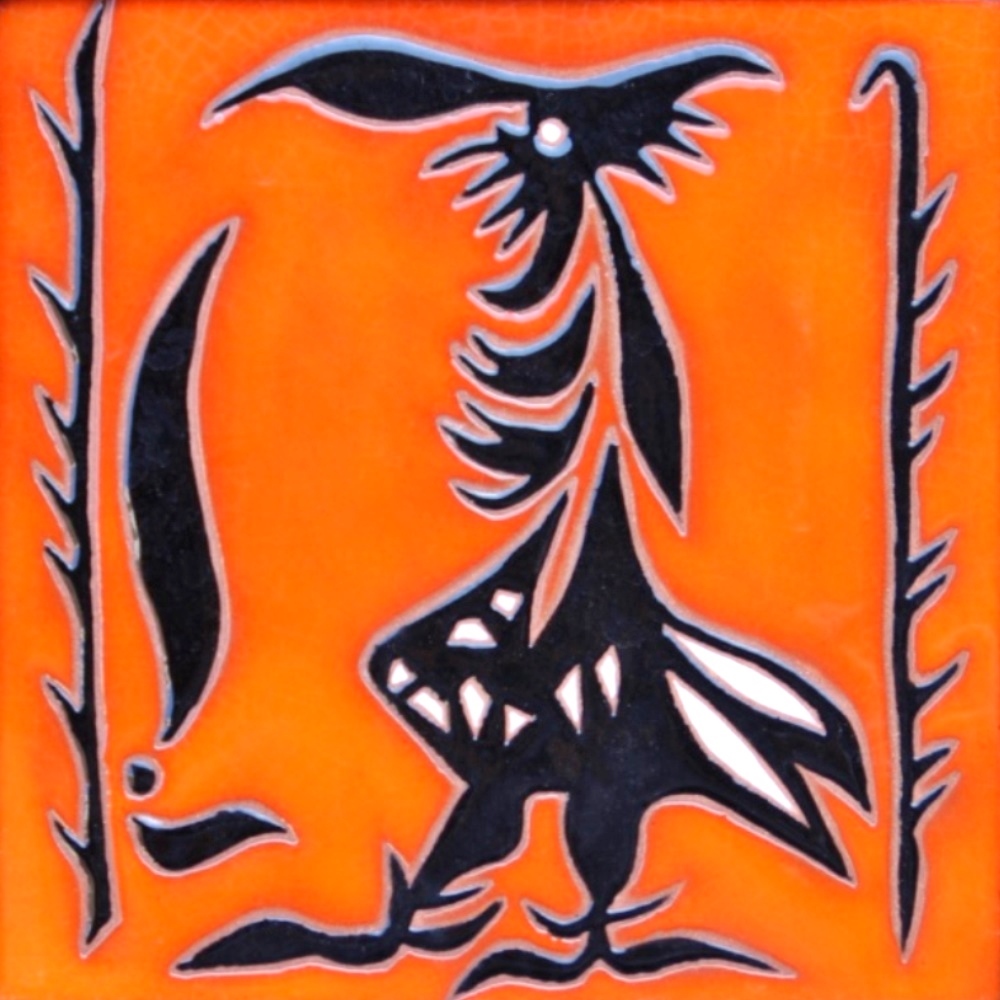Ceramic tile designed by Jean Lurçat – Titled: Black rooster, 1960
Original ceramic designed and drawn by Jean Lurçat – Black rooster circa 1960
Ceramic tile depicting a black rooster on an orange background signed and situated on verso.
Provenance: Sant-Vicens, France
Dimension: 19 x 19 cm.
Artwork is not available anymore! Sold – Thank you. For more information on artist or his artworks contact gallery
Clic here to see more artworks in ceramic or pottery>>
Jean LURÇAT (1892 – 1966)
Jean Lurçat is a French painter, ceramicist and tapestry designer, born in Bruyères, Vosges on July 1, 1892 and died in Saint-Paul-de-Vence on January 6, 1966.
He owes his fame mainly to his tapestry works which he deeply renovated in the twentieth century. He is the older brother of the architect André Lurçat.
After secondary studies in Épinal, he enrolled at the Faculty of Sciences of Nancy and planned to study medicine. He went to Switzerland and Munich in Germany leaving the path of medicine studies he entered the studio of Victor Prouvé, the head of the School of Nancy.
In 1912, Jean Lurçat moved to Paris with his brother André. He enrolled at the Académie Colarossi then at the workshop of the engraver Bernard Naudin. He then discovered the painters Henri Matisse, Paul Cézanne, Auguste Renoir, became close to Rainer Maria Rilke, Antoine Bourdelle, Élie Faure, and founded with three friends the Feuilles de Mai, an art magazine in which these celebrities participated. He then became an apprentice with the fresco painter Jean-Paul Lafitte with whom he led, in 1914, a first project at the Faculty of Sciences of Marseille.
His first trip to Italy was interrupted in August by the outbreak of the First World War. Returned to France, he enlisted in the infantry.
In 1920, he traveled a lot: Berlin, Munich, Rome, Naples… then moved to Paris with Marthe Hennebert, Rainer Maria Rilke’s muse. She’s the one who weaves two tapestries that he has to draw in a small stitch. He meets the art dealer Étienne Bignou.
In 1921, he met Louis Marcoussis, he discovered Pablo Picasso and Max Jacob, created sets and costumes, for the show of the Pitoëff company: The one who receives slaps, and spends the autumn on the shore of the Baltic. The following year, he created his fifth canvas tapestry.
In 1926, he exhibited personally in Paris and Brussels, and participated in group exhibitions in Vienna, Paris and Antwerp. His fame begins to reach him: many articles are devoted to him. His works represent portraits and oriental landscapes.
In 1945, Lurçat bought the Château des Tours-Saint-Laurent, a vestige of an 11th century fortress which dominated the town of Saint-Céré with its ramparts.
From 1951, Lurçat stayed regularly in Sant Vicens in Perpignan in the Pyrénées-Orientales. He works with ceramics by decorating dishes, plates, tiles, pitchers, vases at a pottery center created by Firmin Bauby.
He made the acquaintance of the Aude painter Jean Camberoque there. He creates large ceramics for the school of Saint-Denis and the pottery of Sant Vicens.
In 1961, he produced the monumental ceramics that adorns the facade of the Maison de la Radio in Strasbourg in collaboration with Gumersind Gomila, his exclusive ceramist with whom he co-signed his greatest works.
Sources Wikipedia archives Ysebaert Louisseize Arts
Date:
August 19, 2021
See more artworks and bio of
Art Ceramic